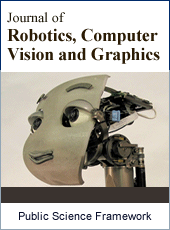Journal of Robotics, Computer Vision and Graphics
Articles Information
Journal of Robotics, Computer Vision and Graphics, Vol.1, No.1, Aug. 2016, Pub. Date: Jun. 23, 2016
Design of a Low Alloy Steel Vehicle Tie Rod to Determine the Maximum Load That Can Resist Failure
Pages: 1-11 Views: 2933 Downloads: 3112
[01]
Ikpe Aniekan Essienubong, Department of Mechanical Engineering, University of Benin, Benin City, Nigeria.
[02]
Owunna Ikechukwu, Department of Mechanical Engineering, University of Benin, Benin City, Nigeria.
[03]
Patrick O. Ebunilo, Department of Mechanical Engineering, University of Benin, Benin City, Nigeria.
The theory of durability and reliability was investigated on vehicle tie rods and it was found out that buckling is the major failure mode that hampers its longevity during braking, cornering and both compressive and tensile load acting on the vehicle while going through speed bumps. To determine the maximum load required for a typical tie rod material to buckle, low alloy steel was selected using CES EduPack 2013 software and this was done on the basis of the required material attributes and the loading conditions of tie rod during operation. Using CATIA software, both ends of the tie rods (inner and outer) were subjected to different load case scenarios obtained from ADAMS software. The load cases were analysed to find the maximum loads in both directions, capable of causing the tie rod to buckle or yield in operation and the analysis showed a maximum load of 18,563N. CATIA software was used to model several designs and analyse possible areas of stress concentrations on the tie rod. The hollow design was chosen as it meets the design objectives with a mass of 4.7kg which is not too different in real life and may not result in the performance of the design being compromise.
Automobile, Brake, Cost, Failure, Load, Reliability, Safety, Suspension System
[01]
Bob, I. (n.d) Tie Rod Ends [online] available from <http://fromvolvoclub.org.uk/faq/FrontSuspension.html> [3 May 2014].
[02]
Elkady, M. and Elmarakbi, A. (2012) Modelling and Analysis of Vehicle Crash System Integrated with VDCS Under High Speed Impacts. Central European Journal of Engineering 2(4), 585-602.
[03]
Gebler, E. (1974) 'Suspension And Steering Fundamentals Of The BMW 520'. Power 2004, 08—12 (National Applied Research Laboratories (n.d). [online] available from <(http://w3r2.ncree.narl.org.tw/the comparison of behaviors for circular and square concrete-filled steel tube (cfst) under axial compression> [4 May 2014].
[04]
Gillespie, T. D. (1992) Fundamentals of Vehicle Dynamics. Society of Automotive Engineers. ISBN: 978-156091-199-9.
[05]
Guiggiani, M (2014) The Science of Vehicle Dynamics, Dordrecht: Springer. ISBN: 978-94-017-8532-7.
[06]
IAC Search & Media (2012) What Is the Purpose of a Tie Rod End? [online] available from <http://uk.ask.com/question/what-is-the-purpose-of-a-tie-rod-end. htm> [3 May 2014].
[07]
Keskin, M., Bing O. I. and Karaaslan, A. (2008) Investigation of the situation of tie rod ends failing prematurely due to dust boot failure with soft pvc and neoprene.
[08]
Kim, H., Seo, M. and Bae, W. (2002) 'A Study Of The Manufacturing Of Tie-Rod Ends With Casting/Forging Process'. Journal of materials processing technology 125, 471-476.
[09]
Longhurst, C. (2012) The Steering Bible [online] available from <http://carbibles.com/steering_bible.html> [3 May 2014].
[10]
Meng, J., Chen, Q. and He, R. (2014) Research on Optimal Control for the Vehicle Suspension Based on the Simulated Annealing Algorithm. Journal of Applied Mathematics, (5):1-5.
[11]
Meywerk, M. (2015) Vehicle Dynamics. West Sussex: John Wiley & Sons. ISBN: 978-1-118-97135-2.
[12]
Patil, A. M., Chavan, S. D., Kavade, V. M. and Ghorpade, S. U. (2013) FEA of Tie Rod of Steering System of Car. India: Rajarambapu Institute of Technology.
[13]
Reza, N. J. (2008) Vehicle Dynamics: Theory and Applications, Springer. ISBN: 978-0-387-74243-4, (Print) 978-0-387-74244-1 (Online).
[14]
Robert, Q. Riley (2003) Alternative Cars in the 21st Centur. A New Personal Transportation Paradigm, Second Edition. Society of Automotive Engineers, SAE Stock Number - R227.
[15]
Rasmus, O. (2008) Buckling Driven Debonding in Sandwich Columns. [online] available from <http://www.sciencedirect.com/science/article/pii/S0020768307003666> [3 May 2014].
[16]
William, H. (2016) How Car Suspensions Work. Howstuffworks, a Division of Infospace LLC. [online] available from <http://auto.howstuffworks.com/car-suspension.htm> [25 May 2016].

ISSN Print: Pending
ISSN Online: Pending
Current Issue:
Vol. 1, Issue 1, August Submit a Manuscript Join Editorial Board Join Reviewer Team
ISSN Online: Pending
Current Issue:
Vol. 1, Issue 1, August Submit a Manuscript Join Editorial Board Join Reviewer Team
| About This Journal |
| All Issues |
| Open Access |
| Indexing |
| Payment Information |
| Author Guidelines |
| Review Process |
| Publication Ethics |
| Editorial Board |
| Peer Reviewers |


